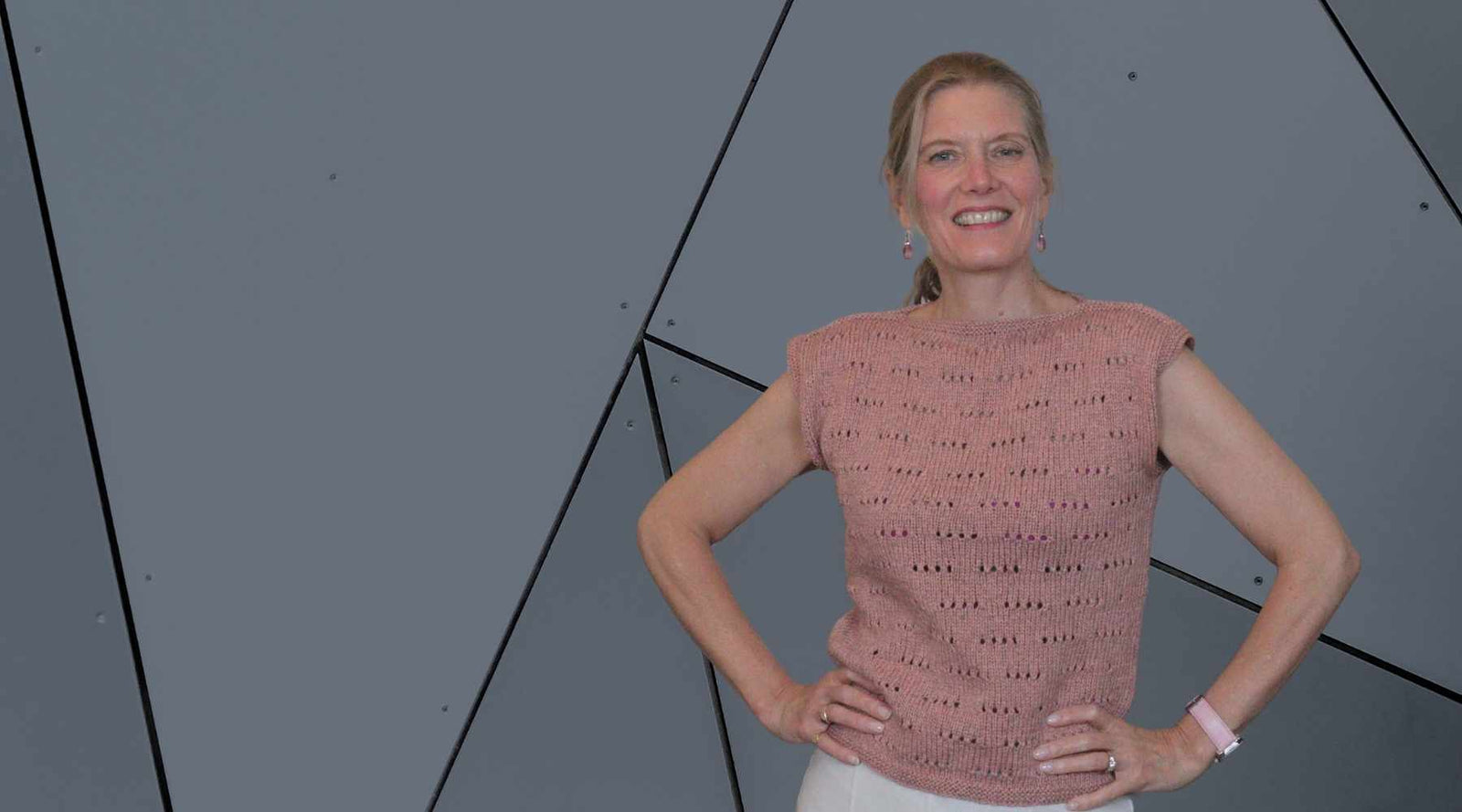Your Cart is Empty
Free shipping on all domestic orders over $150
Free shipping on all domestic orders over $150

Why sweaters don't fit - and what to do about it
April 19, 2021 5 min read
“I’m afraid it won’t fit”. When I asked you to tell me your biggest fear when it comes to making a sweater, that’s what you told me. Not at all surprising. We are all afraid that our sweaters won’t fit. Spending the time, money, and effort choosing the pattern, buying the yarn, and making the garment, only to have it not fit -- I don’t think there’s a more disheartening moment.
There are lots of reasons a sweater might not fit, in order of least likely to most likely.
-
The gauge is wrong -- Gauge is a measure of how large or small our stitches are. The designer indicates in the pattern what the gauge is - how many stitches it takes to make a piece of fabric that’s 4 inches wide. If our gauge is too tight and each stitch is shorter and narrower than the pattern calls for, the garment will come out smaller than expected. Conversely if our gauge is too loose, each stitch is wider and taller than it should be, and our garment will come out larger than expected. Hence the importance of doing a nice big swatch, and checking yourself as you go along.
-
We don’t know what size and length our body is. - As strange as that sounds, it is true. I’m not talking about body dysmorphia or anything, but rather a simple lack of understanding about what size and length our various parts are, relative to one another and what adjustments we might need to make to get a good fit. For instance, I was in my 40s before I understood that I am long waisted. I had no idea, and I can’t even count how many too-short sweaters I knit. Having an accurate set of measurements is essential to getting a good fit.
- We don’t understand ease - while gauge and body measurements are important for good fit, ease is the most important aspect of getting sweaters that not only fit us, but fit us the way we like things to fit. Simply stated,easeis the difference between a garment’s finished measurements and our body measurements. Let’s look at a few of the different ways designers address ease in a pattern
Finished bust measurements: Typically a pattern gives us finished bust measurements, and they might be something like this: 36 (40, 44, 48, 52, 56, 60)”. If your bust measurement is 40”, you will have the following amount of ease at the bust with each of the sweater size options: -4 (0, 4, 8, 12, 16, 20)“
Recommended ease: Often a designer will help by saying how much ease they think we should have for the garment to fit the way they intend. They’ll say something like Recommended ease 4-6”. In this case, the designer is telling us to choose the size with a finished measurement that is 4-6” larger than our actual bust measurement. Sometimes they’ll even say how much ease is in the garment on the model: Sweater is shown in size 36 with 4” of ease. Which means that the model’s bust is 32” and she’s wearing the sweater with a finished measurement of 36”
To fit bust: In some cases, the designer will try to help by giving not the actual finished measurement, but rather a line that says,to fit bust and a series of body measurements. It might look something like this:
To fit bust 32 (36, 40, 44, 48, 52, 58)”
The idea is that we find the option closest to our actual bust measurement and knit that size.
These are all helpful tools to getting the right fit and the right ease, but even with all this information, there are other things that can impact getting the right fit.
- a large bust
- broad shoulders
- Bust is not the widest part of torso
- Preference for a loose fit
- Preference for a close fit
- Unsure about fit preference
- and a host of other things
There is a huge difference between getting a sweater that fits, and getting a sweater that fits us the way we like it to fit.
Here’s the secret.
Go through your wardrobe and find a sweater you already own that fits you exactly the way you like it. Ideally it is similar to the one you are thinking about making. For instance, if you are looking at knitting an oversized dropped shoulder pullover find an oversized dropped shoulder sweater that you love. If you don’t have one in your wardrobe, tuck a tape measure in your bag, and use this as an excuse to go shopping - not to buy, but to try. In the store, find an oversized dropped shoulder sweater and take several sizes to the dressing room. Try them all on and decide which size you like best. Then lay the sweater out on the dressing room bench and measure it.
Draw a schematic, which is just a fancy word for a little picture of your sweater, and write the measurements on the picture..
For a dropped shoulder sweater, it’s pretty easy. Here's what you're looking for
- How wide is the sweater at the bust line (just below where the sleeves are sewn in) when it’s lying flat? Mark that on your schematic.
- How long are the sleeves from cuff to seam?
- How deep is the sleeve from top to bottom where it attaches to the body of the sweater?
- How long is the sweater from the hem to the underarm?
- How wide is the neckline?
- How deep is the neckline?
With this information, you can go back to your pattern, compare the measurements of the sweater you tried on and loved with the options given in the sweater you'll be knitting, and make an informed decision about which size to choose. While we used an oversized dropped shoulder garment in this example, you can use the same approach for any kind of sweater you’re considering knitting.
You won’t have to do this every time, but I do recommend that you do it for a variety of different sweater styles you are considering, especially if you’ve been unhappy with the fit of garments you’ve knit in the past, This approach will help you get a true sense of how much ease you like in your garments and should help you better choose a size so you can knit with more confidence knowing your sweater will fit you exactly the way you like it, and take pride in how great your hand-knit sweaters look on you.
Warmly,
~Ellen
p.s. At Crazy for Ewe, we are all about helping you knit sweaters that fit. If that's your thing too, or you would like it to be, make sure to join our sweater knitters list for news and information about sweaters and more.
Leave a comment
Subscribe
Sign up to get the latest on sales, new releases and more …

